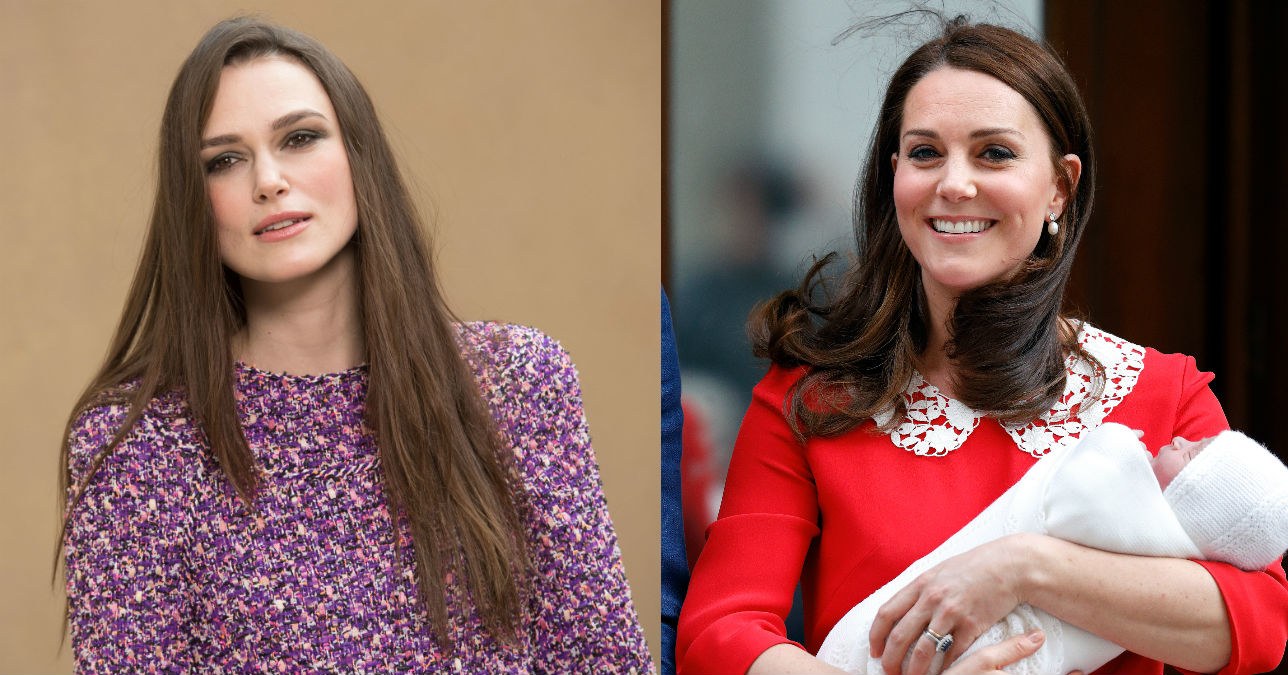Keira Knightley Criticizes the Expectations Set on Kate Middleton After Giving Birth

Keira Knightley is taking society’s expectations for women’s bodies before, during, and immediately after pregnancy—and that includes some thoughts on the expectations set on Kate Middleton to appear for photographs hours after giving birth.
In a powerful essay that appears in the new collection Feminists Don’t Wear Pink (And Other Lies), Knightley contributed a piece titled “The Weaker Sex,” which she dedicated to her daughter. In it, the actress recounts her daughter Edie’ birth story in intimate detail in an effort to combat the unrealistic expectations set on women to be perfect moments after bringing life into the world.
Refinery29 published excerpts from Knightley’s essay, which begins:
“My vagina split. You came out with your eyes open. Arms up in the air. Screaming. They put you on to me, covered in blood, vernix, yourhead misshapen from the birth canal. Pulsating, gasping, screaming.You latched on to my breast immediately, hungrily, I remember thepain. The mouth clenched tight around my nipple, light sucking on andsucking out. I remember the s—, the vomit, the blood, the stitches. Iremember my battleground. Your battleground and life pulsating.Surviving. And I am the weaker sex?”
Knightley then explained that Edie’s birth came just one day before Middleton gave birth to her second child, Princess Charlotte. The pictures and videos showing the Duchess smiling and holding Charlotte on the hospital steps came in stark contrast to what Knightley herself was experiencing after giving birth.
“We stand and watch the TV screen. She was out of hospital seven hours later with her face made up and high heels on. The face the world wants to see. Hide. Hide our pain, our bodies splitting, our breasts leaking, our hormones raging,” she wrote. “Look beautiful, look stylish, don’t show your battleground, Kate. Seven hours after your fight with life and death, seven hours after your body breaks open, and bloody, screaming life comes out. Don’t show. Don’t tell. Stand there with your girl and be shot by a pack of male photographers.”
If Kate felt well enough to stand out there for photos after giving birth (and, more importantly, wanted to), that’s absolutely fine. She’s done it three times now, and Diana did it too—making it something of a royal tradition. But it’s not the reality of what the hours after birth are like for many women, who took to social media after the birth of Prince Louis this year to share photos of themselves exhausted and worn out after labor—a stark contrast to what the cameras pointing at Middleton saw through their lenses.
Though the essay does mention Middleton by name, Knightley’s focus is squarely on the pressures put upon women (royals and non-royals alike)—pressures she says men rarely experience. And that includes on the job:
“I turn up on time, word perfect, with ideas and an opinion. I am up with you [her daughter] all night if you need me. Sometimes I cry I’m so tired. Up with you all night and work all day… My male colleagues can be late, can not know their lines. They can shout and scream and throw things. They can turn up drunk or not turn up at all. They don’t see their children. They’re working. They need to concentrate.”
Instead, she wrote women must “be pretty. Stand there… Be nice, be supportive, be pretty but not too pretty, be thin but not too thin, be sexy but not too sexy. Be successful but not too successful. Wear these clothes, look this way, buy this stuff.”
She closed by noting, “I work with men, and they worry that I don’t like them. It makes them mad, it makes them sad, it makes them shout and scream. I like them. But I don’t want to flirt and mother them… I don’t want to flirt with you because I don’t want to fuck you, and I don’t want to mother you because I am not your mother.”
The entire essay can be found in Feminists Don’t Wear Pink (And Other Lies), which is available now.
Related Content:
These Powerful Photos Capture the Beauty of Mothers Around the World
The Frame That Holds the Big Picture: How Mothers and Daughters Can Change the Way We Talk About Being Women
We Challenged Women to Post One Selfie—Declaring How Much They Love Their Body
